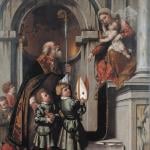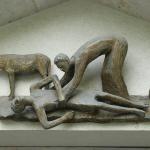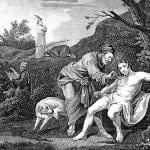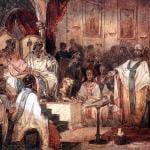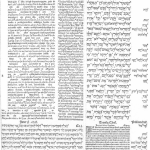Washington D.C., Jun 14, 2017 / 02:59 am (CNA/EWTN News).- Online pornography is one of the fastest growing addictions in the United States, on par with cocaine and gambling. Once confined to the pages of a smuggled Playboy magazine, pornography can now be in the hands of anyone with a smartphone, and is more prolific and anonymous than ever. PornHub, one of the world’s largest sites with porn video streaming, reports that it averages 75 million viewers per day, or about 2.4 million visitors per hour. In 2015 alone, the number of hours streamed from the site was double the amount of time human beings have populated the Earth, according to TIME Magazine. And while pornography used to be a simpler problem for priests to address in the confessional – consecrate yourself to Mary, go to weekly adoration – the growing level of addiction makes it a much more complex problem for the Church to address. That’s why Fr. Sean Kilcawley, the program directory and theological advisor for pornography ministry Integrity Restored, has started to put on intensive trainings for clergy, providing them resources and practical tips for how to address the growing crisis of pornography addiction.How the trainings work For an intensive training, Fr. Kilcawley takes a dozen or so priests for 3-4 days and immerses them in resources and training for the porn-addicted in their fold. He also facilitates shorter, one-day conferences. “We try to equip the priest to get that person to come talk to them outside of confession, just to bring that into the light, so that the priest can then become the first responder in the field hospital of the church,” Fr. Kilcawley told CNA. Smaller groups work best, he added, because it allows the priests space to process the information and to be more vulnerable with one another. During these trainings, Fr. Kilcawley tackles the subject from an anthropological and theological standpoint, while Dr. Todd Bowman, a Christian psychologist and director of the SATP Institute, addresses the issue from a psychological viewpoint. Modeling the relationship between a priest and a sex therapist during the trainings is key, Dr. Bowman said. “I know that sounds like the start of a joke: a priest and a psychologist walk into a conference,” Dr. Bowman told CNA. “But (it’s important) to demonstrate this relationship between soul care and care of the psyche or the mind, this process of healing often requires psychological care,” he said. “So we’re trying to give priests the experience that not all psychologists are anti-church, or anti-Catholic. At the same time, not all Christian or Catholic therapists are equipped and qualified for this, so we’re trying to…(show them how to be) intentional in selecting therapists who will honor church teaching but who will also have the competence to do this work well with porn or sex addiction.”Preventative action: Stopping porn addictions before they start Practical things priests can do to address pornography addiction generally fall into two categories: preventative and interventional, Fr. Kilcawley noted. One of the key things a priest can do to stop pornography addictions is to ensure that the parents of the parish are being provided with education and resources they need for pornography prevention in the home. “We’ve always said that it’s the parent’s job to educate their children, but as a Church we haven’t done a great job teaching the parents how to educate their children,” Fr. Kilcawley said. “And we now live in a world where it's no longer optional to have those conversations.” No longer optional, because studies show the average age of first exposure to pornography is 8 years old – and any kid with access to a phone or a tablet could accidentally stumble upon pornography, he said. One thing he recommends is that parishes hold mandatory meetings for parents of children who are either receiving the sacraments or religious education at the parish, where they can give parents an overview of Theology of the Body, as well as tips and resources for internet safety and how to address pornography. It can be especially difficult to know how to talk about such a mature topic with such a young age group. However, several books have been written in the past several years to help parents know where to begin, Fr. Kilcawley said, and some parishes hand them out during meetings with parents. One of his recommendations is “Good Pictures Bad Pictures,” a read-aloud picture book that helps parents address the issue with very young children. Starting at the 4th grade level, Fr. Kilcawley recommends the book “Wonderfully Made! Babies” which puts the content within the context of theology of the body and the sacrament of marriage. For the junior high and high school level, he recommends “Plunging Pornography,” a book to leave in the bathroom for teens to find that can serve as a conversation starter. Fr. Kilcawley said in some parishes, groups like the Knights of Columbus have paid for some of these books to be handed out to every parent. He also recommends internet filters like Covenant Eyes, which sponsors a special service for parents, parishes and schools.Interventional: What to do about those who are already addicted Probably the most common place a priest will first find out about a pornography addiction is in the confessional. When someone confesses viewing porn, Fr. Kilcawley said one of the best things a priest can do is to ask a few guiding questions to help them make a good confession. “Ask questions like, ‘How frequently do you fall into porn and masturbation in general?’” Fr. Kilcawley said. The question is not meant to pry – it helps determine whether the person needs additional help. It’s also helpful to ask when the problem started. “If it started before puberty, which is most common now, almost everyone who started before puberty is going to need extra help stopping, they might need counseling or group support, and spiritual direction,” Father said. A third question to ask would be if they’ve tried to remove porn from their life – are they already using filtering software? Are they seeing a therapist or going to a 12-step group? And then finally, Fr. Kilcawley advised priests in the confessional, ask them if they want to stop. “Just to help them make a good firm purpose of amendment,” he said, adding that when they answer yes, that’s a good opportunity to offer them more resources. But it’s important that the help be personal. Simply handing the person a flyer and telling them to call a therapist or a group typically doesn’t work, Father noted. It should either be the priest, or someone involved in that specific ministry at the parish, who is the first point of contact for that person, and can help them get in touch with additional resources. Another thing priests can do is start a porn or sex addict support group in their parish. Fr. Kilcawley said he started one in his office once a week, with a small group of men who were all struggling with porn addictions. “Most people who are stuck in addiction, they need a support group, whether it’s a 12-step group like Sexaholics Anonymous or a spiritual support group, where they are open and vulnerable and accountable about their lives. They need that, plus a counselor, plus a spiritual director that they’re working with regularly,” he said. Thou shalt not: The don’ts of porn ministry A mistake often made by untrained clergy in pornography addiction ministry is that they may suggest, explicitly or implicitly, that a pornography addiction is the fault of the spouse. “It’s not the spouse’s lack of sexual interest that’s to blame for her husband’s sexual addiction,” Dr. Bowman said. Addicted persons will often try “blame shifting,” he added, which creates “a spiritual crisis that compounds the betrayal trauma” of the spouse. The next mistake clergy could make would be to minimize the impact of the addiction on the spouse. Most people who find out their spouse has a sex addiction will experience varying levels of feelings of betrayal, Dr. Bowman said. “There’s significant trauma in that loss of identity – but the Church can speak about identity as sons and daughters of God into that space,” he added. It’s when identity is only being informed by brokenness that bigger problems arise. Another mistake would be to abandon those in recovery. If a priest commits to setting up support groups in his parish, he needs to follow through, Dr. Bowman said. “If you are setting yourself up as a support that means take the phone call, schedule the meeting, even if it's inconvenient, you’re going that measure and not abandoning folks in recovery,” he said.Not a fringe ministry – this is evangelization 101 The biggest cardinal mistake that clergy can make in regards to pornography addiction ministry is never mentioning it, Dr. Bowman said. It’s usually a more “omissive than commissive” problem, he commented. “It’s not like (clergy) are actively avoiding talking about this, but they may think, ‘My parishioners don’t want to hear about this, there are other things that are more relevant and important.’ But, according to Dr. Bowman, “There may be no more pressing topic for parishioners and priests alike...the only mistake would be not to bring it up.” It may be helpful for priests to view this as part of evangelization, and not as a fringe ministry, Fr. Kilcawley said, because very likely, someone who is stuck in addiction is unable to have a good relationship with the Lord. “Most people who are stuck in addiction believe they’re unlovable, and that if people really knew them they would reject them, and they don’t trust other people to meet their needs and so they have to meet their own needs, and their addiction is the best way to meet their need,” he said. “So if someone has those core beliefs, they can’t really know our Lord.” “So anti-pornography work and anti-porn apostolates, they’re really the first stage of evangelization.” Both Dr. Bowman and Fr. Kilcawley said they hope that increasingly, priests become aware of the urgent need to reach pornography addicts in their pews. “We live in a culture where statistically, about half of Christians report looking at porn at least monthly,” Fr. Kilcawley said. “So if that’s the case then, yeah we need a lot more (pornography ministry). It’s not a ministry for a few people, it’s more of a ministry for everyone.” Read more










